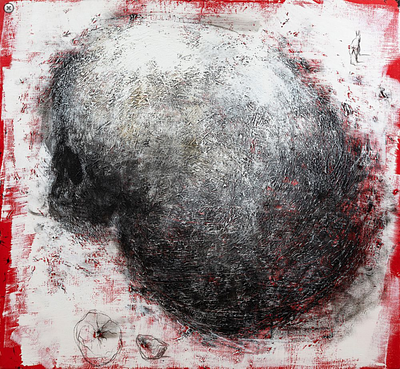ALEXIS LEYVA MACHADO-KCHO- (Isla de Pinos, Nueva Gerona, Cuba, 1970) Untitled, 2006. Crayon and acrylic on board.
Lot 131
About Seller
Setdart Auction House
Carrer Aragó 346
Barcelona
Spain
Setdart Subastas was born in 2004 and is currently the first online art auction in Spain with solidity, prestige and reliability guaranteed by our more than 60,000 users. Setdart has a young, dynamic and enterprising team ready to successfully manage the purchase and sale of art works through custom...Read more
Estimate:
EUR€2,000 - EUR€4,000
$2,061.86 - $4,123.71
Absentee vs Live bid
Two ways to bid:
- Leave a max absentee bid and the platform will bid on your behalf up to your maximum bid during the live auction.
- Bid live during the auction and your bids will be submitted real-time to the auctioneer.
Bid Increments
| Price | Bid Increment |
|---|---|
| EUR€0 | EUR€10 |
| EUR€200 | EUR€25 |
| EUR€500 | EUR€50 |
| EUR€1,000 | EUR€100 |
| EUR€3,000 | EUR€200 |
| EUR€5,000 | EUR€500 |
| EUR€10,000 | EUR€1,000 |
| EUR€20,000 | EUR€2,000 |
| EUR€50,000 | EUR€5,000 |
About Auction
By Setdart Auction House
Oct 19, 2021
Set Reminder
2021-10-19 08:00:00
2021-10-19 08:00:00
America/New_York
Bidsquare
Bidsquare : CONTEMPORARY ART
https://www.bidsquare.com/auctions/setdart-auction-house/contemporary-art-7701
Setdart Auction House sofia@setdart.com
Setdart Auction House sofia@setdart.com
- Lot Description
ALEXIS LEYVA MACHADO-KCHO- (Isla de Pinos, Nueva Gerona, Cuba, 1970) Untitled, 2006. Crayon and acrylic on board. Signed and dated in the lower right corner. Published in the Catalogue of the Cuban Art Exhibition held at Lucery Gallery in Stockholm, 2006. Measurements: 54 x 170 cm; 59,5 x 175,5 cm (frame). The economy of elements shown in this work makes the figure it presents stand out. The absence of background and of almost any allusion to an environment that situates this human figure makes the viewer focus on it, without being distracted by any other element. A line draws the rope on which the figure would seem to balance if it were not for the fact that it is sitting. It is these same lines of the drawing, which highlight the anatomy of the figure only in a general way (which prevents us from seeing whether it is a man or a woman, her age, etc., giving us a general allusion to the entire human race), which highlight the figure. Two rods emerge from the shoulders, ending in oars, from which other smaller and less remarked rods seem to emerge, which, in turn, seem to end each one in another smaller oar. Kcho's work has evolved from the first sculptures of the early nineties, made from woven tree branches, to large-scale assemblages in installations such as the one presented at the Arsenale at the Venice Biennale in 1999. His work reached international renown after his inclusion in the Havana Biennial in 1994, the year in which he also participated in the exhibition Cocido y crudo (Cooked and Raw) held at the Museo Nacional Centro de Arte Reina Sofía. The sea is always present in Kcho's work. His pieces refer to the Cuban landscape and, therefore, allude to the most decisive element of life on the island, the isolation marked by the geographical limit of the water boundary. His work evokes the maritime voyage as an ideal territory for remembrance and nostalgia. His stranded boats reflect on the phenomenon of migration, a theme from which he creates his scenographies on the journey and which speak of the impossibility of fleeing from our memory, our destiny and our roots.The objects frequently used by the Cuban artist are those he finds on his walks along the seashore and in the streets of Havana, pieces of wood, rope, clothes, glass that he manipulates and assembles to create his sculptures. The handmade character of his pieces is an essential component and refers to the culture of recycling where everything has several uses different from those for which it was originally created.
- Shipping Info
-
In-house shipping available. Please inquire at admin@setdart.com.
-
- Buyer's Premium



 EUR
EUR CAD
CAD AUD
AUD GBP
GBP MXN
MXN HKD
HKD CNY
CNY MYR
MYR SEK
SEK SGD
SGD CHF
CHF THB
THB















